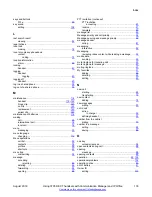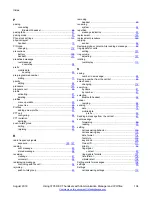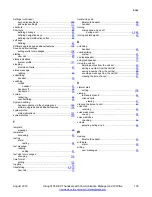
Appendix A: Safety Precautions
Safe operation
For safe and efficient operation of the handset, observe the guidelines given in this manual and all
necessary safety precautions when using the handset. Follow the operating instructions and
adhere to all warnings and safety precautions located on the product, the Regulatory Information
delivered with the handset, and this User Manual. Do not disassemble the handset. Disassembling
the handset voids the warranty.
The handset contains no user serviceable components. Service should be performed by an
Authorized Service Center only. Changes or modifications to the equipment not expressly
approved by the party responsible for compliance could void the user's authority to operate the
equipment Frequency Range.
The handset is a radio transmitter and receiver. When it is on, it receives and sends out radio
frequency (RF) energy. The handset operates on different frequency ranges depending on market
and employs commonly used modulation techniques:
EU (ETSI): 1880-1900 MHz/250mW
USA/Canada (FCC): 1920-1930 MHz/100mW
Note:
Product Designator for regulatory purposes of the Avaya 3735 DECT handset is DH7.
Regulatory Compliance Statements (EU and EFTA)
Exposure to radio frequency signals
Close to ear
Handheld/body mounted
DH7–xxxx
0.075 W/kg (10g)
0.076 W/kg (10g)
This mobile device meets guidelines for exposure to radio waves. Your mobile device is a radio
transmitter and receiver. It is designed not to exceed the limits for exposure to radio waves
recommended by international guidelines. These guidelines were developed by the independent
scientific organization ICNIRP and include safety margins designed to assure the protection of all
persons, regardless of age and health.
August 2019
Using 3735 DECT handsets with Communication Manager and IP Office
125











































